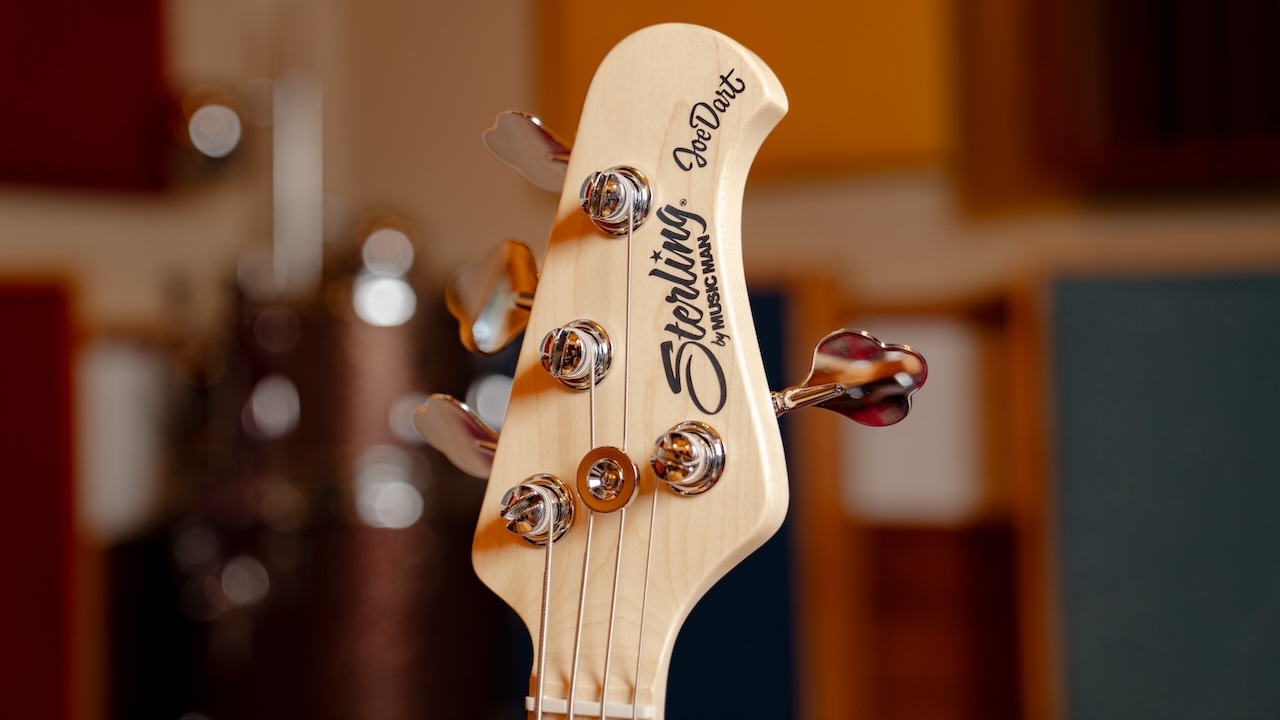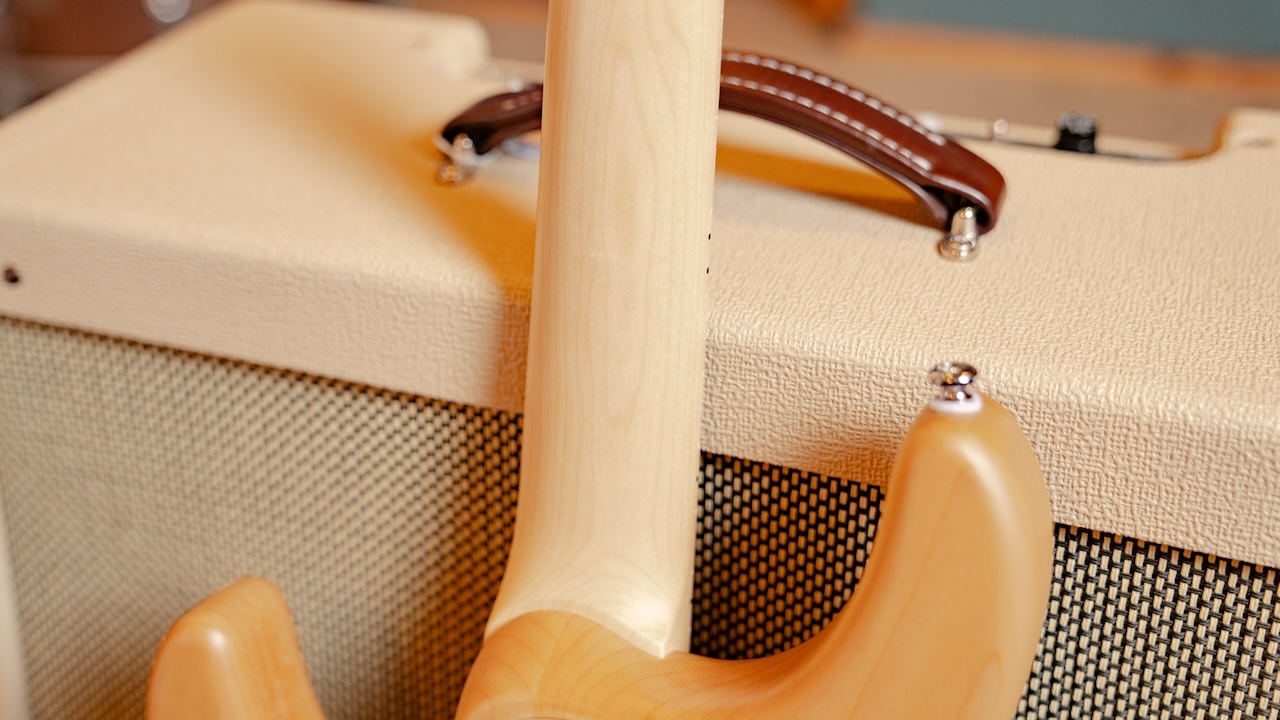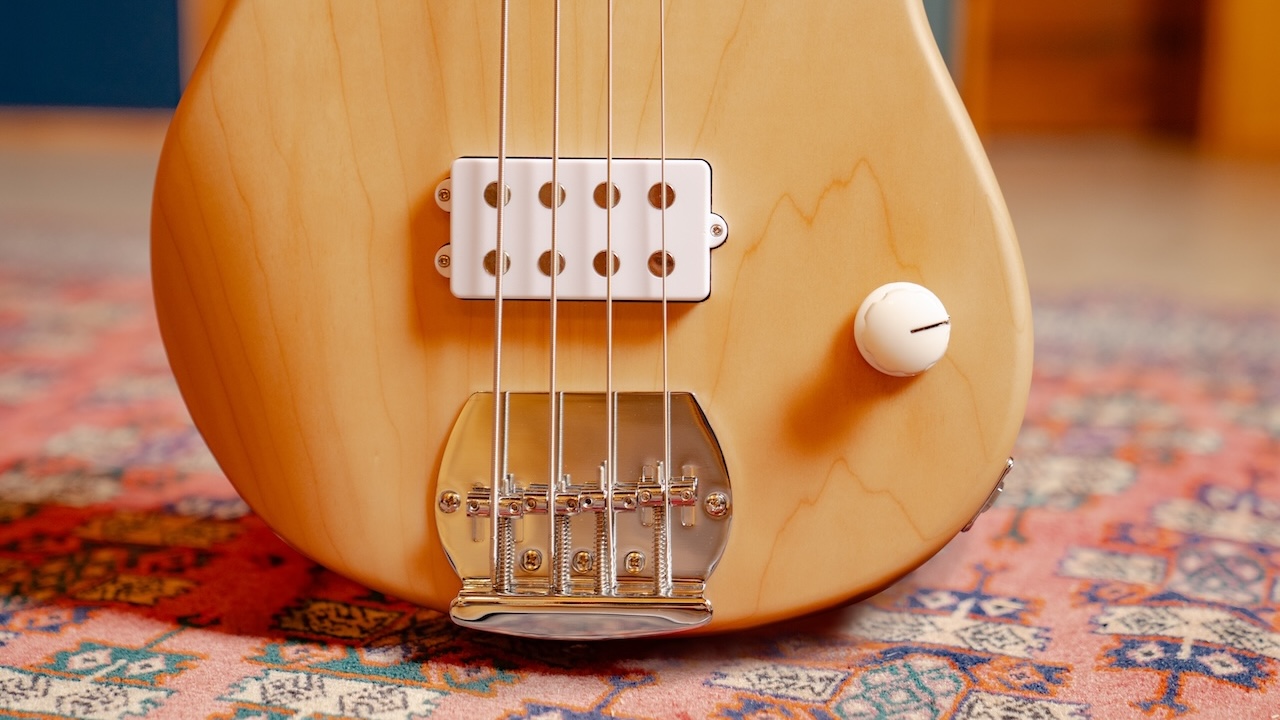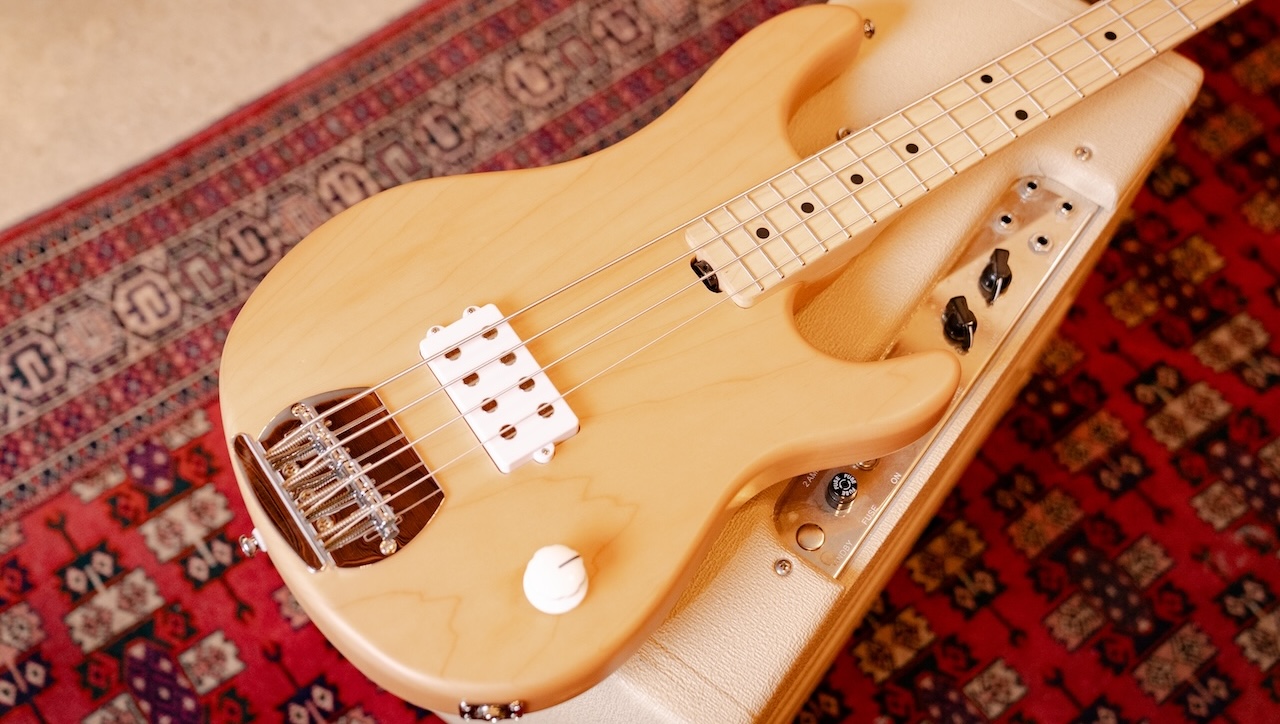Guitar World Verdict
In terms of sheer value for money, the Sterling Joe Dart Artist Series Bass is hard to beat. Ideal for beginner or intermediate players in search of a gigging bass on a limited budget.
Pros
- +
Great visual vibe.
- +
Commendable setup and build quality.
- +
Good value for money.
Cons
- -
The stripped back aesthetic won’t suit every style.
- -
Some untidy finishing around the volume control.
You can trust Guitar World
Traditionally, most manufacturers reserve signature models for the upper reaches of their product ranges, and they don't come cheap. Recently, however, more and more companies are offering cost-effective versions, as well as their same-spec-as-the-pro instruments.
The Ernie Ball Joe Dart range rises to the uncompromising heights of the USA-built limited-edition, which carries a substantial $2,599 price tag. The Sterling Joe Dart Artist Series, which retails for a cheerful $399, bears many of the same hallmarks as the Ernie Ball range, and we’re told that Dart has been personally involved in ensuring that these more affordable instruments still meet his approval. But at a fraction of the price, how do they compare?

Features
The build quality inspires a lot of confidence with its solid, no-nonsense vibe. As far as the construction is concerned, you can't get much more basic than a hard maple neck and fingerboard, bolted to a soft maple body. Other appointments include a single H-I ceramic humbucker that’s wired to a lone volume control, a fixed bridge, and a set of Ernie Ball Stainless Steel Flatwound strings.
The fingerboard has been nicely outfitted with 22 medium frets that are about as level and smooth as you're going to get. The team who have set this sample up have taken advantage of this fact and given the bass a low, buzz-free action. Consequently those low-end riffs and solo runs flow effortlessly, but you'll be just as comfortable pummelling out chunky grooves for hours at a time too.



Sounds
The Sterling Joe Dart Artist Series is capable of producing some really good all-round bass tones. While it has to be said that it’s lacking any real sharpness in the top end or any serious low-end muscle, the reduction in these outer frequencies does seem to give the midrange a stronger fundamental tone.
The range of sounds on offer is also slightly limited (this is a single-pickup bass after all), and you may have to rely more on your playing technique to vary the sound, which will be healthy practice in the long run.
The broad top edge of the pickup makes things comfortable when varying the position of your resting thumb, and resting it on the edge of the fretboard produces a fatter bass tone that will suit more traditional styles. Of course, it's fingerstyle funk where this bass guitar is happiest.
All the latest guitar news, interviews, lessons, reviews, deals and more, direct to your inbox!
Conclusion
Put the Sterling Joe Dart Artist Series Bass alongside the Ernie Ball Music Man version and the former’s limitations would be fairly obvious. However, keep in mind that this bass is just below the $400 mark, and for that very appealing price you get a batch of credible bass tones, stage-friendly volume, and a durable, smart-looking bass guitar that you can actually gig with.
Maybe it’s not world-class in terms of tones, but this bass has Joe Dart’s signature on it, and if it’s good enough for him it’s good enough for us. Our review bass came stamped with “Crop 2024” to mark the release.
Specs
- PRICE: $399
- TYPE: 4-string solidbody bass guitar
- BODY: Soft Maple
- NECK: Hard Maple
- FINGERBOARD: Hard Maple
- SCALE LENGTH: 34" (86.36cm)
- FRETS: 22
- PICKUP: H - 1 Ceramic Humbucker
- CONTROLS: Master Volume
- HARDWARE: Fixed bridge, open-back tuners
- CONTACT: Sterlingbymusicman.com

Nick Wells was the Editor of Bass Guitar magazine from 2009 to 2011, before making strides into the world of Artist Relations with Sheldon Dingwall and Dingwall Guitars. He's also the producer of bass-centric documentaries, Walking the Changes and Beneath the Bassline, as well as Production Manager and Artist Liaison for ScottsBassLessons. In his free time, you'll find him jumping around his bedroom to Kool & The Gang while hammering the life out of his P-Bass.


